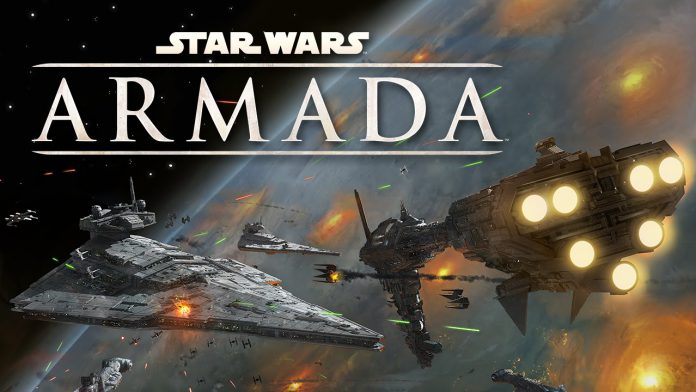Today in Star Wars: Armada, Summer gets attacked by a swarm of angry fish. This is Part II of the Dockyard series on small Rebel Alliance ships.
The Ships – “Fear is your natural warning system; it keeps you alive so that you can fight.”
The Rebel Pelta is descended from its Republic predecessor and is a sluggish fleet support craft/carrier. Until Liberator showed up, this was the only way for the faction to access Fleet Command upgrades. It’s still the only way for the Rebels to get a reusable Fleet Command, so don’t discount it yet. Peltas are rugged, but they’re not meant for protracted fleet engagements. They’re too slow to catch or escape enemies without Engine Techs, and they’re inefficiently priced for combat. The ship’s lone title opens up a wealth of weird officer combos that aren’t possible anywhere else. The Pelta’s slot layout also lends itself solidly to support, and that’s what we do with it.
The cheaper Assault Ship packs an Ordnance slot, but it’s comprehensively overshadowed in the attack role by the MC30c. Rather, take it for the superior anti-squadron damage output and lower price tag. The Assault Ship exemplifies the Pelta’s role as a second-line support ship. A four-die front battery isn’t phenomenal, but it’s enough to finish a weakened ship or threaten something large that has already activated. The Officer and Fleet Command slots are where it’s at. Intensify Firepower is the default Fleet Command, since every fleet needs to shoot, but the Rebel Alliance makes a compelling argument for Take Evasive Action or Entrapment Formation. Both of these mobility-oriented fleet commands can excel in MSU fleets, where small craft need to keep the opposition honest. The officer of choice for providing the Fleet Command with tokens is Hondo. Between taking a token on the first round (you shouldn’t be in combat yet), Hondo, and discarding the card to use it, you have a safe three uses of any Fleet Command. That’s 2 points for a guaranteed three uses of your fleet-wide buff. In that role, I always advocate for keeping the price low so that the rest of your fleet can benefit from the Fleet Command. Alternative builds might involve Projection Experts and Raymus Antilles for battlefield repairs, or supplementing the backline support with a shot of External Racks. Using Phoenix Home to bring Ahsoka is a great way to ensure that the frontline has the tokens it needs, but I wouldn’t risk someone more expensive there. Taking Phoenix Home for the bonus officer adds 4 points to the officer’s cost, quickly making you a piñata.
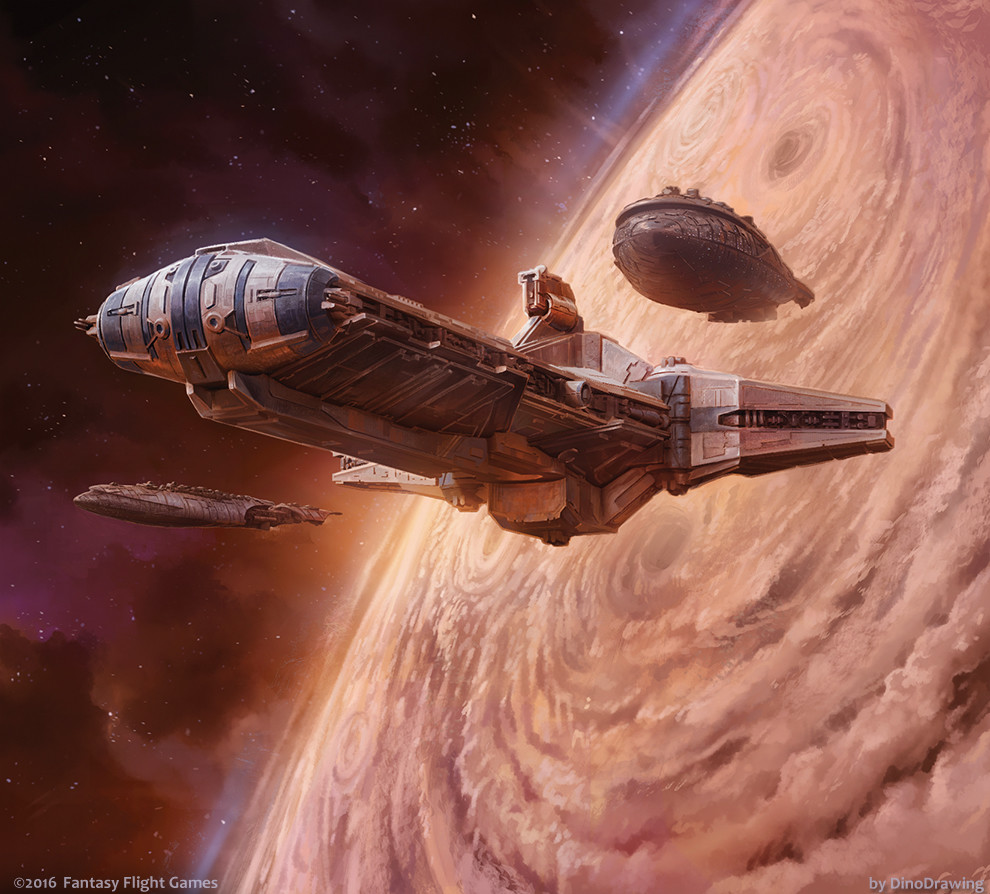
For those looking for a lightweight carrier with more conventional defensive and ergonomic characteristics than a Nebulon-B, there’s the Command Ship variant. The bonus here is a best-in-class Squadron value of 3, and an Offensive Retrofit slot. This ship was made to be a carrier. Point-for-point, it’s not the most efficient way to put Squadron commands on the field – that honor goes to the GR75 Medium Transports. Instead, get a carrier that doesn’t have the GR75’s single failure point: losing the Scatter token. A helpful Support Team slot and the opportunity to take Phoenix Home for a second officer also serve to differentiate it from other Rebel carriers.
Conventional carrier fitting wisdom dictates that your Offensive Retrofit should be Expanded Hangar Bay or Boosted Comms, depending on your needs. The former is better when you have upgrades that correspond to your Squadron value, like Fighter Coordination Team. The latter extends your reach and protects your ship. They’re equally valid choices. If you do fill the Support Team slot on a carrier, it will usually be the Fighter Coordination Team – this pairs with slow craft like B-wings. That’s where the basics end. What makes the Pelta stand out as a carrier is Phoenix Home and its native Fleet Command slot. Phoenix Home enables a second officer, and the Fleet Command slot is your answer to even greater fighter mobility via All Fighters, Follow Me. All Fighters, Follow Me answers the Alliance’s slower squadrons, and you can reach ludicrous speed if you pair it with Fighter Coordination Team. Phoenix Home makes things even more intense. Flight Commander or a faction-locked officer is the go-to on carriers, but you get a bonus officer slot via Phoenix Home. The Rebels have a swathe of faction-locked squadron officers who often don’t get picked due to overspecialization, or because the Flight Commander is already in the seat. Any of them can now be considered without compromising your carrier’s base capabilities. Adar Tallon is a disgustingly expensive officer who allows one squadron your ship commands to activate again later, effectively doubling the value of tha squadron. Wedge Antilles lets your fighters duck out of combat with Cloak. General Draven is a niche pick who is either really strong, or utterly useless. If Toryn Farr didn’t wind up on a GR75 somewhere in the fleet, she’ll be at home here. Special mention to Raymus Antilles, who can fuel Wedge’s hunger for squadron tokens or support your Pelta’s squadron command, and Ahsoka, who is such a great clutch pick. Fitting a Pelta for carrier duty feels very… Rebel-esque. You’re stacking a small, valuable ship with familiar faces to support a fighter-focused doctrine.
The Pelta has its detractors, but I think that thoughtful fitting and flying will get you far. The Pelta gets such a long block of text because it’s unlike any other ship in the Rebel fleet. It’s strange, but it’s capable of things nobody else is. The onus is on you to use it for its talents, rather than waste the points trying to turn it into the wrestler it isn’t.
The MC30c is the Rebels’ answer to the infamous Gladiator – a suspiciously tough small-base ship tailored for close assault. It diverges strongly from its Imperial counterpart in two respects: versatility and durability. Its versatility is fueled by an upgrade bar that enables long-ranged builds. It has a leg up in maneuverability and top speed over the Gladiator, has a Defensive Retrofit slot for high potential durability, and a Turbolaser slot that opens up long-ranged loadouts. Most importantly, this fish is served with two incredible titles for maximum tankiness. Where most Gladiator loadouts are one-trick ponies that use Demolisher to hammer the enemy into submission, the MC30c requires more finesse, but captains are rewarded with tremendous endurance and flexibility. I love this thing.
The MC30c’s Admonition and Foresight titles are outstanding. Admonition is the cheaper pick that lets you toss out a green defense token to cancel an attack die. This discard can get around enemy Accuracy results to keep your ship alive even under the weight of unusable defense tokens, and you start with duplicate tokens to burn through. I recommend discarding a Redirect to mitigate incoming damage, especially if you’ve been using your shields judiciously and have run out of shields to redirect to. Get some extra mileage from defunct defense tokenst, you know?. Foresight is expensive, but functionally doubles the effect of your defense tokens. Redirect damage to twice as many hull zones, and reroll/cancel twice as many dice using your Evade. Simple. Incredible. Whichever one you take depends on your point budget and how you intend to fly the ship. Admonition shines under duress – when your shields are down and you’re taking hard hits, discarding future defenses for reprieve is excellent. Foresight is about endurance. It’s most effective when you have all of your defense tokens available, and will keep frustrating your opponent through pure resilience. I prefer Foresight as a matter of taste.
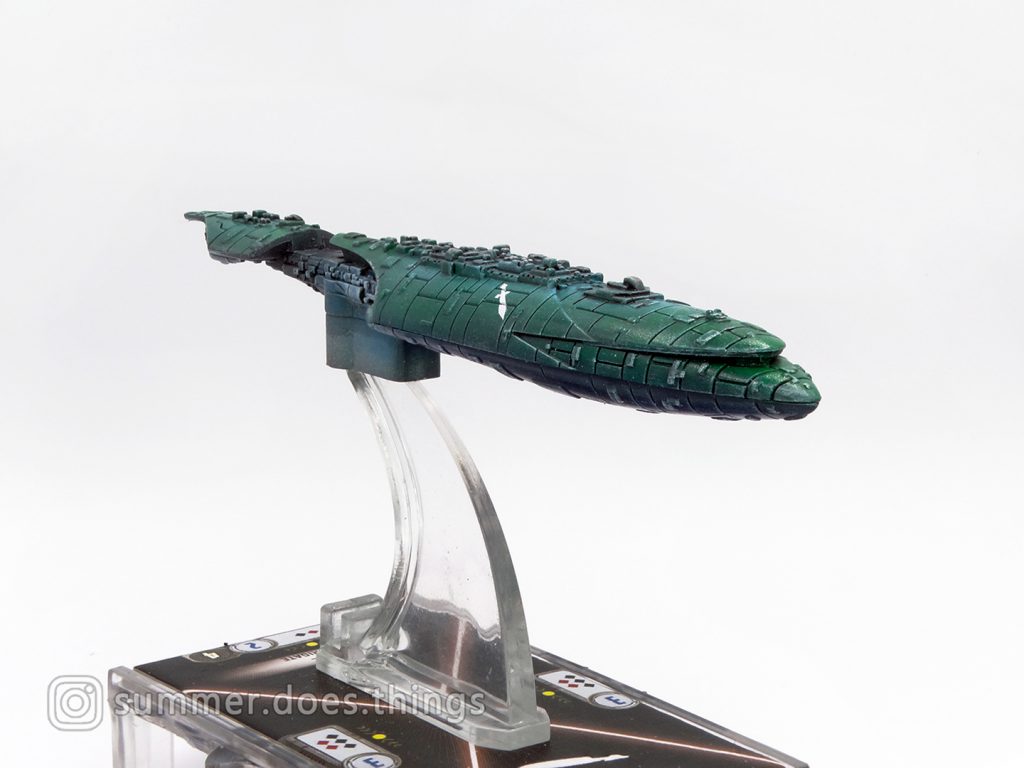
Consider the Torpedo Frigate the default in-fighter. It can be fitted like a classic torpedo ship: your pick of Assault Concussion Missiles and Assault Proton Torpedoes, plus Ordnance Experts for dice control. You have blue dice that can generate Accuracy results to make those torpedoes absolutely whip. This gives the MC30c the kind of consistency that Gladiator captains can only dream of. The ship gets interesting when you factor in the Turbolaser slot and defensive options. The Turbolaser slot opens up interesting support options. H9 Turbolasers guarantee an accuracy result out of your blue dice at all times to lock down a priority enemy defense token. XX-9 Heavies make this ship an absolute nightmare if you’re using General Dodonna. Heavy Turbolaser Turrets force your opponent into the unenviable position of picking between the best damage mitigation defense token, or all of their other tokens and can prevent a painful return-Salvo. Filling your Turbolaser slot on a torpedo build is optional, and you’re presented with interesting weapon support options there. On the other hand, defenses are not optional. You have a lot of expensive upgrades on a pricey hull, so protect that investment. The first consideration for MC30c should be either of the fantastic titles. If you want to fly without a title, at least install Lando for safety. Ironically, the MC30c’s titles are so strong that a Defensive Retrofit is normally unnecessary. You can reach ludicrous (and expensive) resilience if you ever install Early Warning System or Reinforced Blast Doors, though.
The longer-ranged and pricer Scout variant demands synergy with a commander, or Turbolaser upgrades. It can (and should) be flown to maximize close-ranged firepower, but the ability to key into Admiral Ackbar or Turbolaser Reroute Circuits gives powerful alternatives. The Scout’s unique position as a torpedo ship with long-ranged potential encourages a different playstyle. It doesn’t just brawl like a Gladiator or the MC30c Torpedo Frigate. Instead, captains should usd its long-range to skirmish and harass, before diving in for a killing blow with its black dice. Failing to uphold its range advantages means you overpaid for a Torpedo frigate. Skirmishing without using the black dice for a killing blow means you could have just taken a cheap CR90. If you fit a Scout frigate, please use all of its capabilities.
The Scout frigate’s ranged utility is critically dependent on its turbolaser slot and building into your fleet’s needs. Turbolaser Reroute Circuits are the default option for skirmishing, and make great use of your duplicate Evade. If you’re willing to commit very hard to broadside attacks, combining Slaved Turrets with Admiral Ackbar yields an absurd dice output. Support-oriented options like the earlier H9s and Heavy Turbolaser Turrets require you to get close, so they’re better-served on the Torpedo variant. Interestingly, building toward ranged combat gives you more freedom in your ordnance. Normally, the Assault Concussion Missile/Proton Torpedo and Ordnance Experts combo is indispensable on a maneuverable torpedo ship. Here, you can cut costs by flying it as a skirmisher in the opening half of the game and close in for deathblows. If that’s the plan, then you don’t need to spend a combined 8+ points on torpedo upgrades for one or two rounds of contact. Consider the vastly cheaper External Racks to give one massive punch when it’s needed, and spend the savings elsewhere. That doesn’t mean you should wholly discount a more standard fitting. It’s playstyle dependent – do you want to spend more of the game at range, or in someone’s face? Fit accordingly.
There’s also some leeway in defensive options. Fighting at longer ranges exposes you to less fire (Onagers aside.), so flying without a title becomes completely valid. At long ranges, Expert Shield Techs do well to mitigate shield damage. Early Warning System is also a good contender, but you’re perfectly fine with a single defensive upgrade. Just don’t be overconfident when you begin a torpedo run – the purpose of a killing blow is to finish off a weakened target, not initiate a stand-up fight. Be a good insurgent and fight dirty.
The MC30c is a fantastic ship that’s endured well through many years of game updates. Crucially, Armada 1.5 greatly improved it by making Evade tokens more powerful. Its durability is legendary for a small ship, and it punches well above its weight class. It benefits from a more measured flying style than its Imperial cousin and can’t be slotted into a fleet at will.
Considerations for Rebel Small Ships – “ A death mark’s not an easy thing to live with.”
Command advantage
Small Rebel hulls are happy to be inserted into most lists as an extra activation or support asset. But if half of your list depends on them, it’s time to consider the excellent Rebel commanders aimed at small hulls. Several leaders were basically made for these hulls, and act as potent force multipliers for them. Chief on my list are Leia Organa, Mon Mothma, General Rieekan, and General Cracken.
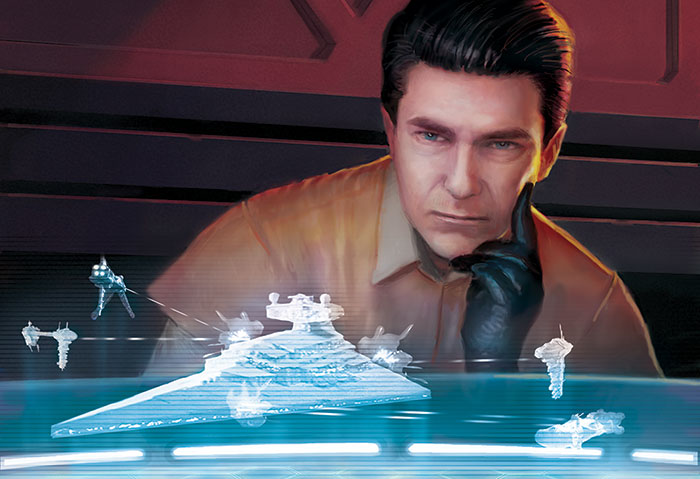
Leia Organa
Leia is a personal favorite because she maximizes the value of each of your activations, and was made for swarms. Her ability to gain the effect of a command token while resolving a command using a dial squeezes out incredible utility out of each ship activation. Your Escort Nebulon with Yavaris now commands three squadrons by default. A CR90’s front arc is now four dice, has a re-roll and you used Turbolaser Reroute Circuits to secure a guaranteed double-hit face. That’s on par with a medium-base Munificent running Linked Turbolaser Towers.
Your ships activate every single round, so getting high-impact commands on a horde of small ships snowballs quickly. Leia works best with Command 1 hulls like the CR90 and Hammerhead because their low Command value only requires selecting a Command on the current round. They require no foresight into future turns, and can always maximize her impact by pulling the best Command for the situation. She’s a delight in a swarm of Corvettes and Hammerheads backed up by a small carrier or MC30c.
Mon Mothma
I played Mon Mothma for ages when I first got my MC30cs and still come back to her. She was substantially improved in Armada 1.5, receiving both a points reduction and benefitting from the newly buffed Evade token. Mon Mothma gets value from activating as often as possible – that means lots of ships with Evades. Her ability only benefits the short and medium-range brackets when using Evades, so she also encourages shorter-ranged combat. That’s why you’ll find her in command of MC30c and Hammerhead based fleets, rather than skirmishing CR90-based fleets. Her ability is pretty potent on its own. Being able to force your opponent to reroll two attack dice at close range can mean a lot when some medium ships only have four base dice in their best arcs. Canceling dice at medium range greatly extends the longevity of your torpedo ships on approach and while breaking contact. She’s not a janky tournament winner that thrives on some kind of convoluted token manipulation, but she’s a capable and thematic commander. She’s also easy to understand, which is something sorely missing in tabletop gaming rulesets.
Any discussion of Mon Mothma would be completely inadequate without mentioning her outrageous synergy with Foresight. Simply put, she works with that title. Under her command, Foresight cancels an absurd two dice at medium range, and forces three re-rolls at close range. Canceling two dice can remove four damage (plus criticals). This is nuts on a ship that has 4 HP and 3 shields in its best arcs. You need an incredibly strong justification to not take Foresight in a Mon Mothma fleet.
General Rieekan
Rieekan was a balancing disaster and dominated the tournament scene for a long while. His ability is simple, but has extreme gameplay ramifications. Once per round, when a friendly ship or unique squadron is destroyed, it is treated as ‘alive’ until the last possible moment of that round. Then it’s removed from play as normal. The obvious benefit is that said unit gets to activate and fly recklessly. Your ship always gets one last salvo and can ram the enemy without consequence. Your aces attack one last time, killing a target. Units can seize or obstruct objectives for one more round before dying. It’s an intensified version of 40K unit abilities that allow a unit to shoot or fight one last time. His ability goes completely nuts in the presence of small ships. In Armada, ships are a… substantial board presence. They ram and obstruct other ships, bodyblock objectives, and shoot things. A Hammerhead that is ‘dead’ with nothing to lose is a tactical nightmare. The enemy ship risks ramming it during its maneuver, taking damage in the process. Then your Hammerhead gets its activation (if it didn’t already) and fires all of its weapons. Then it goes for the ram, since it has nothing to lose. That’s two points of damage on the enemy ship (in a game where small ships often have 4 HP), and the target was bodyblocked and delayed from its destination. This is one of the best ways to use the Hammerhead’s Garel’s Honour for even more damage.
Rieekan loves Hammerheads and MC30cs. He loves to sit safely aboard Jaina’s Light while small ships crash into enemies one at a time. His ability would honestly be far more fitting on an Imperial commander, but this is what we got. New players often play Rieekan recklessly under the assumption that he’s only valuable when your units are dying. This can lead to a fast wipe and inefficient use of your ships. Excellent players use Rieekan for his mastery of positional warfare: denial of objectives and movement, last-minute objective seizure and kills, efficiently timed bonus damage. He only works on one relevant unit per round, so the player must strategically feed the correct ship or squadron to the opponent each round to trigger his potent ability.
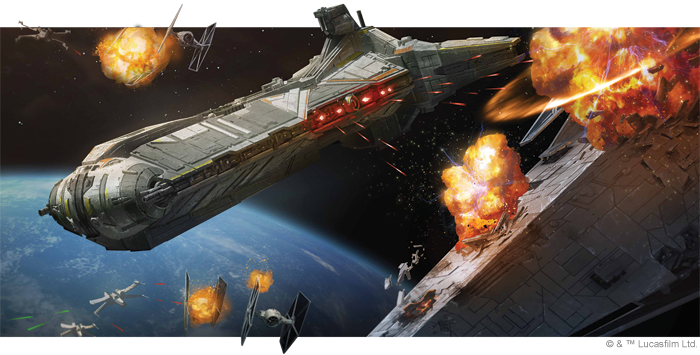
General Cracken
Cracken is probably the least popular Rebel small ship commander. Obstruction is a great bonus, but the prerequisite of going fast is steep. Armada is a game of maneuver, and traveling at higher speeds often leads to trouble – like enemy turbolasers. Small ships also want to pace their maneuvers to play objectives, which runs counter to the Sonic the Hedgehog-inspired playstyle of Cracken. If you’re willing to put up with those issues, then Cracken is actually a very competent skirmishing commander. Ships that move fast generally want to chase objectives and skirt the edge of enemy gun range so that they don’t run in and explode. His ability is also more effective at longer ranges where enemy battery fire is limited to red dice, and your Evades give you more dice cancellation on top of the removed die from his ability.
This insurgent, hit-and-run style promotes the use of GR-75s as light carriers and perhaps Jaina’s Light as a high-velocity flagship (seeing a pattern here?). Plus your choice of Hammerheads or MC30cs for direct damage. Hammerheads are the spammier option and MC30cs don’t synergize as strongly with his preference for ranged combat. Unless you mount one of the aforementioned long-ranged Scout Frigate builds, of course. More so than other commanders, objective selection is really important with Cracken. Being locked into an objective that forces you to fly into a concentrated enemy defense can cost you dearly. Cracken wants his fleets moving at speed and keeping the enemy at arm’s length. Play to his strengths and you’ll have something good.
Conclusion – “The Emperor has made a critical error, and the time for our attack has come.”
The two chunky Rebel small ships do a great job of rounding out their roster. Small-base torpedo ships are exclusive to the Rebels and Empire, and the Rebels bring an incredibly survivable contender in the MC30c. Meanwhile, the Pelta is a great multi-role support ship that only slips in comparison to its Republic counterpart. Even though the Rebel small roster doesn’t bring the same up-front damage as its Imperial counterpart, it’s stacked with options for maneuver warfare and hit-and-run.
Have any questions or feedback? Drop us a note in the comments below or email us at contact@goonhammer.com.
